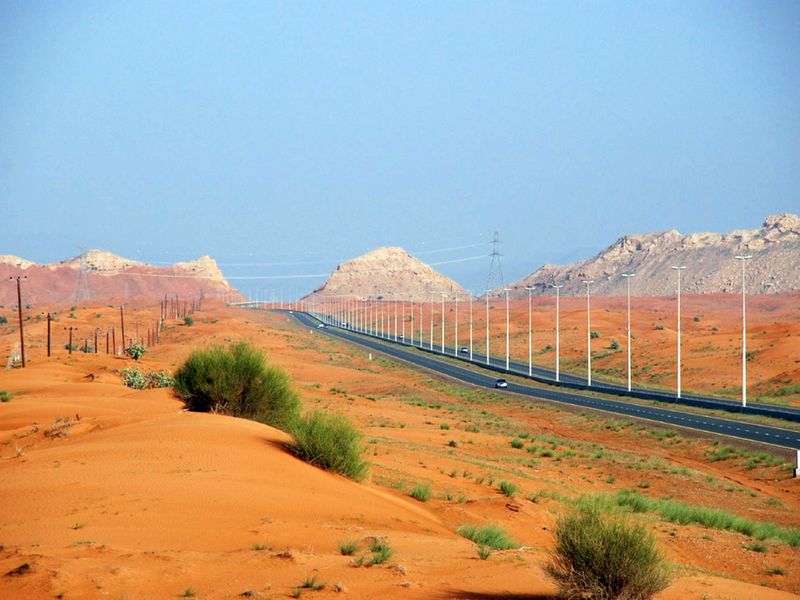Dubai - Fujairah:Construction of Dubai - Fujairah Freeway
Disciplines
-
Roads
-
Hydraulic Engineering
Companies
DC Abu Dhabi
Client
Ministry of Public Works, Dubai
Duration
Since 2007Project Activities
- Site visits
- Site studies of layering and cleavages of the mountains by a geologist
- Design of a new template with benches and different cut slope-schemes for different weathered rocks and cleavages
- Recommendations for active safety systems against falling rocks: rock netting, shotcreting, rock bolts, safety fences, gabion walls, drainage
- Recommendations for passive protection systems against landslides: widening of the verge (rock trap ditch, rock fall shelters)
- Combination and orthorectification of satellite images
- Determination catchment areas
- Determination time of concentration with corresponding rainfall intensity
- Calculation of peak flow at wadi crossing
- Hydraulic modelling of several wadis
- Hydraulic design of several culverts and a bridge
- Impact determination of the different culverts and bridge on the wadi
- Recommendations for maintenance of the culverts.
- Reports
Contact
Abu Dhabi (Headquaters)
Lulu Centre, 5th, 10th and 15th Floor
P.O. Box 26417
Abu Dhabi
United Arab Emirates
Phone: +971 2 6721923
Fax: +971 2 6720809
E-Mail: info@dorsch.com
Description
A new four-lane freeway is planned from the city of Dubai, on the Persian Gulf, to the town and harbour of Fujairah, on the Gulf of Oman. DC Abu Dhabi is entrusted with the supervision of the construction of 33 km of this freeway.
In this section the freeway passes through the rugged Hajar Mountains. These mountains are very steep with only sparse vegetation and hardly any topsoil. The ground is rocky and gravelly and the area is very dry.
Along this section rock-cuttings with depths up to 1.000 m are planned.
As the construction works began it turned out that a stretch of 3.6 km long had to be shifted and the planned template for the cutting scheme (cut slopes,widths of benches, cut toes) did not provide sufficient safety against falling rocks and landslides.
Therefore, DC was assigned to:
- Elaborate a hydraulic design for the wadi crossings with the shifted stretch of freeway.
- Develop a new template for the rock slopes, benches and cut toes along a ca. 20 km long section with rock-cuttings depths up to 100 m.
- Give recommendations for possible protection systems against rock fall and landslides.

